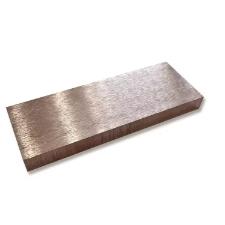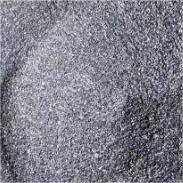**The Metal Lineup: Who Plates Out First?**
(In What Order Do Metals Plate Out)
Ever wonder why some metals cling to an object faster than others during electroplating? It’s not random. Think of it like a queue. Some metals are pushy and jump to the front. Others hang back. Understanding this pecking order, the metal plating order, is key for anyone dipping into plating, from hobbyists to factory pros. Let’s break down the lineup.
**1. What Determines Metal Plating Order?**
The metal plating order isn’t magic. It boils down to science. Specifically, it’s governed by the electrochemical series. This list ranks metals based on their tendency to lose or gain electrons. Metals higher on this list are more reactive. They give up electrons easily. Think zinc or aluminum. Metals lower down are less reactive. They hold onto their electrons tightly. Gold and platinum are down here.
In electroplating, we force metals to gain electrons. This turns metal ions in a solution into solid metal atoms on the cathode surface. The key point? Metals lower on the electrochemical series (the less reactive, more “noble” ones) gain electrons more easily. They reduce at less negative voltages. So, they plate out first.
Picture a solution containing copper ions and zinc ions. Copper is lower (more noble) than zinc. Apply a voltage. Copper ions snatch the electrons first. Copper plates onto the object. Only after most copper is gone will zinc start plating. The metal plating order follows their nobility: gold plates before silver, silver before copper, copper before nickel, nickel before zinc, and so on. The less reactive metal wins the race to the cathode.
**2. Why Metal Plating Order Matters**
Ignoring the metal plating order causes problems. Big problems. Imagine you need a bright chrome finish on a car bumper. Chrome is expensive. Plating directly onto steel is messy. Steel is reactive. Chrome plating directly often looks dull, patchy, and peels off easily. Why? The steel base metal might react with the plating bath chemicals before chrome can plate properly. The adhesion is poor.
The solution? Use the plating order strategically. Plate a layer of copper first. Copper sticks well to steel. Copper provides a smooth, conductive base. Then plate nickel over the copper. Nickel adds corrosion resistance and another smooth layer. Finally, plate the chrome onto the nickel. Now the chrome looks brilliant and lasts. The metal plating order ensures each layer bonds correctly to the one below it. This sequence builds quality and durability.
Without respecting the order, you get weak adhesion. Plating might not cover the object evenly. Some spots might plate, others might not. You might get porous deposits that corrode fast. The final finish could be dull or rough. Controlling the metal plating order is essential for a strong, beautiful, functional coating. It saves money and prevents headaches.
**3. How Metal Plating Order Works in Practice**
Knowing the theory is one thing. Applying it is another. How do we control which metal plates when? Several factors come into play, all centered on manipulating the plating bath and conditions.
First, the solution concentration. The plating bath contains dissolved metal salts. Higher concentration of a specific metal ion makes it easier for that metal to plate. We can make a less noble metal plate first by giving it a much higher concentration than the nobler metal. But this is tricky. The nobler metal might still sneak in.
Second, voltage control. The applied voltage determines the driving force. Lower voltages might only plate the most noble metals present. Increasing the voltage allows less noble metals to plate. But too high a voltage causes hydrogen gas bubbles. This ruins the plating. Skilled operators find the sweet spot.
Third, complexing agents. These chemicals bind to metal ions. They change how easily the ion gains an electron. Adding the right complexing agent can make a less noble metal plate before a nobler one. Cyanide baths were common for this. Safer alternatives are used now. Depolarizers are another trick. They help prevent hydrogen gas formation at lower voltages.
Fourth, pulsed plating. This uses rapid on-off current cycles. It allows better control over the initial reduction step. It can help achieve deposits that might be difficult with steady current. The key is manipulating conditions to get the desired metal plating order for the specific job.
**4. Metal Plating Order Applications**
The metal plating order isn’t just theory. It’s vital in countless real-world processes. Understanding it makes the difference between success and failure.
Decorative plating is a prime example. Think shiny faucets or jewelry. A base metal like brass or zinc alloy gets plated. Copper often goes first for adhesion and leveling. Then nickel for whiteness and corrosion barrier. Finally, a thin flash of gold, silver, or chromium for the beautiful, tarnish-resistant finish. Each layer relies on the previous one.
Electronics depend on it. Circuit boards need precise copper plating inside tiny holes. Copper plates onto a thin electroless nickel or palladium layer. This “seed” layer is essential. Bare fiberglass won’t plate copper directly. Connectors often get gold plating over nickel. The nickel barrier prevents the underlying copper from diffusing into the gold. This keeps the contact resistance low.
Corrosion protection uses it heavily. Cadmium or zinc plating protects steel (galvanizing). These metals are more reactive than steel. They sacrifice themselves, corroding first. This protects the underlying steel. For harsh environments, multiple layers are used. Zinc might go first, then a nickel barrier, then a topcoat like chromate for extra protection. The sequence matters.
Electroforming builds metal parts. A mold gets plated thickly with metal, then removed. Copper is common. Controlling the plating order ensures the copper deposits uniformly and releases cleanly from the mold surface. Without control, the part sticks or warps. Recovering precious metals from scrap solutions also uses plating order. Selectively plating gold or platinum first maximizes recovery value.
**5. Metal Plating Order FAQs**
This topic sparks questions. Here are some common ones:
Can two different metals plate out at the same time? Yes, but usually not well. If their plating potentials are close, they might co-deposit as an alloy. Brass plating combines copper and zinc. Sometimes, impurities co-deposit unintentionally, causing defects. We usually avoid this for pure deposits.
What happens if a more active metal gets plated first? It’s possible if conditions favor it. But plating a reactive metal (like zinc) directly onto a noble metal (like gold) is unstable. The zinc might corrode rapidly. Worse, the zinc could react with the gold. The bond is often poor. The noble surface doesn’t offer good adhesion sites for the reactive metal. The coating might blister or peel.
How do we plate active metals like aluminum or magnesium? These are tricky. They form tough oxide films instantly in air. Standard plating baths won’t stick. Special processes are needed. Zincating or special acid dips create a temporary surface. Then immediate plating, often with nickel or copper, seals it. The initial step is critical. It disrupts the oxide layer just long enough.
Does temperature affect the plating order? Yes. Higher temperatures increase ion mobility and reaction rates. It can shift the effective plating potential slightly. Solutions might behave differently. Baths have optimal temperature ranges. Straying outside can cause poor deposits or change which metal plates first. Control is important.
(In What Order Do Metals Plate Out)
Can I plate a less noble metal over a more noble one? Yes, this is common and often necessary. Copper (noble) plates easily onto steel (active). Nickel (more noble than steel) plates onto copper or steel. The key is preparation. The substrate surface must be perfectly clean and active. The plating bath must be formulated to deposit the desired metal efficiently onto that specific substrate. Good adhesion relies on surface chemistry and bath control.
Inquiry us
if you want to want to know more, please feel free to contact us.


